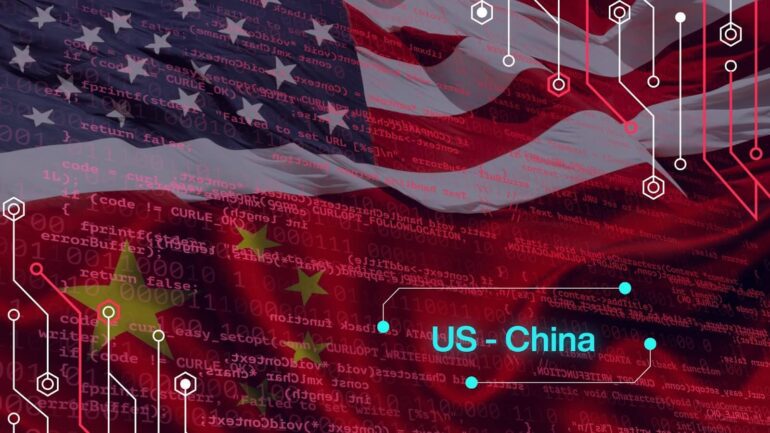TL;DR:
- China’s new AI regulations have introduced strict guidelines, but enforcement varies.
- Regulatory adjustments aim to balance control and AI development.
- China’s chatbots face limitations due to content filters and fine-tuning.
- The U.S. debate centers on regulation’s impact on AI competitiveness.
- Striking the right regulatory balance is crucial for both nations.
Main AI News:
In the wake of China’s recent implementation of new artificial intelligence regulations, the tech landscape is witnessing the emergence of a fresh wave of AI chatbots that have received official government approval. While these regulations have already undergone revisions from their initial proposals, experts note that China’s enforcement has been relatively lenient. However, the trajectory of China’s regulatory approach carries substantial implications for the ongoing technological competition between China and its AI superpower rival, the United States.
The Cyberspace Administration of China (CAC) introduced the Generative AI Measures on August 15th, ranking among the strictest AI regulations globally. These measures stipulate that generative AI services must refrain from generating content that incites subversion of national sovereignty, advocates terrorism or extremism, promotes ethnic hatred, violence, obscenity, or disseminates fake and harmful information. Taming AI chatbots to avoid unwarranted or toxic content has posed a formidable challenge for AI developers worldwide. Some analysts suggest that if China maximally enforces these new regulations, Chinese AI developers could face significant compliance hurdles.
Acknowledging this issue, Chinese regulators have responded by relaxing some of the regulations and adopting a more flexible approach to enforcement. This adjustment aims to strike a balance between controlling politically sensitive information and fostering the development of Chinese AI. This equilibrium will not only shape the political freedoms of Chinese citizens and the success of the Chinese AI industry but is also expected to influence U.S. policymakers’ stance on AI policy as the race for AI supremacy intensifies.
Regulatory Adaptations
By the end of August, the CAC granted approval for the release of eight AI chatbots, including prominent ones like Baidu’s Ernie Bot and ByteDance’s Doubao. Notably, the regulations published in July exhibited less stringency compared to the draft regulations from April. The CAC introduced three key amendments, as explained by Matt Sheehan, a fellow at The Carnegie Endowment for International Peace.
Firstly, the scope was narrowed, focusing primarily on public-facing uses of generative AI, thereby relaxing regulations on internal applications. Secondly, the language in the regulations underwent softening, exemplified by the shift from “Be able to ensure the truth, accuracy, objectivity, and diversity of the data” to “Employ effective measures to increase the quality of training data and enhance the truth, accuracy, objectivity, and diversity of training data.” Thirdly, the revised regulations incorporated language that encourages generative AI development, transitioning from a purely punitive approach.
These adjustments toward a more permissive stance can be partly attributed to concerns over China’s economic well-being, as per Sheehan. Furthermore, a public discourse involving think tanks, academic researchers, government advisors, and industry stakeholders concluded that the initial rules were overly harsh and risked stifling innovation.
Flexible Enforcement Dynamics
Once regulations are finalized, their enforcement becomes discretionary, often characterized by arbitrariness and inconsistency compared to Western standards. According to Sihao Huang, a researcher at the University of Oxford, who has extensively studied AI governance in Beijing, the implementation of rules depends on the authorities’ discretion. Companies operate within a certain degree of freedom, developing ambitious systems but remaining aware of potential government intervention.
Huang underscores the influence of a company’s standing with the government and its connections when it comes to regulation enforcement. Tech companies may also seek to expose vulnerabilities in their competitors’ products to trigger government actions, and public pressure can further prompt regulatory compliance.
U.S. Perspective on Regulation and Competition
In the United States, there is an ongoing debate regarding regulation and its impact on the competition to develop advanced AI systems. Some proponents argue that stringent U.S. regulation may lead to a loss of competitiveness vis-à-vis China. However, Huang dissents, asserting that Chinese AI systems are already lagging behind their U.S. counterparts, and the strict regulatory environment exacerbates this disadvantage.
Huang points out that Chinese AI systems demonstrate limited capabilities, primarily due to content filters that restrict political responses and involve meticulous fine-tuning. Similarly, Jordan Schneider, an adjunct fellow at the Center for a New American Security, emphasizes that current Chinese chatbots lag in terms of sophistication and capabilities compared to their U.S. counterparts.
Schneider contends that the trade-off between political stability and development promotion is overstated. In his view, Chinese tech firms will continue to advocate for regulatory leniency if they perceive themselves falling behind. Nevertheless, he acknowledges that some regulation will be necessary to prevent public backlash as AI technology increasingly affects daily life, particularly in terms of job automation.
Conclusion:
The dynamic landscape of China’s AI regulations presents challenges and opportunities for U.S. companies. While China seeks a delicate equilibrium between control and innovation, the U.S. must carefully consider its regulatory approach to maintain competitiveness in the global AI market. Balancing regulation with fostering innovation will be key for both nations to succeed in this evolving technological landscape.

